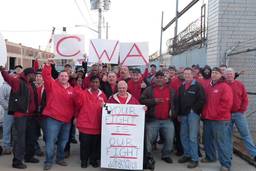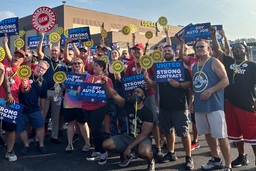Last week, the Mine Safety and Health Administration released its internal review into the federal agency’s role in the problems causing the 2010 explosion that killed 29 miners in the Upper Big Branch Mine owned by Massey Energy Company in West Virginia. While the report claims that MSHA’s poor regulatory conduct did not cause the explosion, it did find that “MSHA and District 4 did not follow established agency policies and procedures.”
The report found that recommendations concerning a methane explosion that occurred at the Upper Big Branch Mine in 2004, similar to the one that caused the explosion, were not kept in the case files for MSHA inspectors. MSHA inspectors who inspected the mine before the 2010 explosion were unaware of these recommendations and thus did not pay attention to them.
The new report also found that the agency did not prosecute Massey for conditions that ultimately caused the explosion: dangerous accumulation of coal dust, as well as poor ventilation. It also found that, breaking from protocol, MSHA inspectors did not inspect the mine in “its entirety.” And the internal review found that MSHA inspectors often did not review the mine’s safety log books.
“Required inspections were not completed. Logbooks where critical information was supposed to be recorded about the conditions of the mine were not examined. MSHA District 4 supervisory personnel did not follow up on what were clearly flagrant violations of the law. These and many other failures allowed Massey to continue to get away with violating the law and putting its employees in danger every single day,” United Mine Workers of America President Cecil E. Roberts said in a press release.
A big part of the problem was that many of the mine inspectors were not properly trained and, due to understaffing, were forced to quickly mine inspections. Budget cuts to the MSHA under the Bush Administration were cited for the reason why so many untrained inspectors were rushed into the field.
“Many had not even completed all their training. This is a nationwide issue at MSHA, the result of years of neglect and indifference by the Bush Administration. But frankly, that’s still no excuse for what occurred at [Upper Big Branch],” Roberts said.
“I don’t think there’s any question MSHA could have done better. I don’t think there’s any question that we surely plan to do better,” said MSHA Administrator Joseph Main. Some hope that this opportunity will be used to improve MSHA and its inspection processes.
But others are skeptical, as MSHA has been aware of similar problems for a long time.
On his blog Coal Tattoo, veteran coal mine reporter Ken Ward Jr. of the Charleston Gazette writes, “Most importantly, remember that the problems uncovered in this internal review mirror those of previous internal reviews — about a dozen of them, done following previous mining disasters over the last two decades.”
Congressman George Miller (D-Calif.), the ranking member on the House Committee on Education and Workforce, has called for the passage of the Robert C. Byrd Mine Safety Protection Act to fix these problems. The bill failed previously during a Democrat-controlled Congress in 2010 — the first time Congress failed to pass some sort of mine safety bill of some variety after a major mining disaster. With the House now Republican-controlled, it seems entirely unlikely that any such bill will be passed now.
“It is clear the entire system failed these 29 miners, from Congress’s failure to maintain adequate and experienced staffing at MSHA over the years, to the agency’s failures to fully enforce the Mine Act, to the inherent weaknesses in that law, to a company hell-bent on exploiting all of those weaknesses,” Miller said in a statement.
“There is broad agreement from multiple investigations on what caused this disaster and dozens of recommendations that merit timely consideration by Congress and the Department of Labor. The health and safety of America’s miners must not be held up by predictable partisan battles. It’s past time we get to work.”









